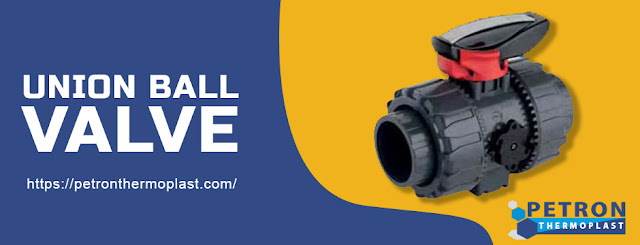A PVC ball valve, also known as polyvinyl chloride, is an on and off plastic valve with a rotating ball with a bore where moving the ball a quarter turn may halt the fluid flow. They may be used to control the flow of water, air, corrosive chemicals, acids, and bases. They are also very cost-effective and long-lasting. With less mechanical strength, ball valves exhibit outstanding low temperatures and pressure tolerance. Polyvinyl Chloride ball valves halt the flow by turning a ball 90 degrees, like all ball valves.
Petron Thermoplast, India's number one thermoplastic product manufacturer, will give you some useful information about the Polyvinyl Chloride ball valves.
Types of Polyvinyl Chloride Ball Valves
This section of our discussion will discuss the types of Polyvinyl Chloride ball valves.
They are:
Automatic PVC valves.
Check PVC valves.
Flanged PVC valves.
Floating PVC valve.
Full port PVC valve.
Manual operated valves.
Slip ball valves.
Standard port valve.
Threaded PVC valve.
Three-way PVC valve.
Trunnion PVC valves.
V port PVC ball valves.
Vented ball valves.
Structure of the ball valves
If you ask for the basic material ball valve, the answer is simple: it is Polyvinyl Chloride. Different PVC materials with various strengths, qualities, and attributes are referred to by the word "PVC." The valve's intended application determines the PVC used for PVC ball valves.
PVC is frequently used in many different goods. It is a thermoplastic preferred for product production because of its durability and environmental friendliness. PVC is resistant to chemicals, strong acids, and water. It has a high level of dependability and durability and may function well for many years.
Housings for PVC valves are made utilizing a variety of plastic molding techniques. Separate shapes of the ball and housing are combined during assembly. The ball valve consists of:
Valve body.
Ball Valve Ball.
Stem Mechanism.
What are the benefits of ball valves?
The most prominent benefits of ball valves are:
It is compact and seamless.
The ball valves are seamless and small, making them more durable and less likely to hinder media flow.
Upkeep for ball valves
Ball valve maintenance is simple and doesn't call for any specialized equipment. Without cutting them off from the line, they may be handled. Seals and seats may be quickly modified to suit an application's requirements.
Benefits of High Temperature
PVC ball valves may tolerate extremely high temperatures up to 180° F, depending on the material used to make the valve.
Efficiency Benefit
Since ball valves are very well sealed and have smooth, flexible material for the ball's movement, the seats and seals eliminate the need for lubricating oil.
The affordability of valves
The most noticeable feature of ball valves is this specific feature. Metal ball valves are far less expensive than other types of ball valves.
Adaptability in Application
Ball valves may be designed to meet the requirements of almost any application. If the demand is too high, some media platforms place restrictions on them. Ball valves can often be installed quickly and with excellent performance.
Bottom line
If you want more information on PVC ball valves, you can switch to the official website of Petron Thermoplast. They are India's number one thermoplastic product manufacturer and have a strong customer base.






No comments:
Post a Comment